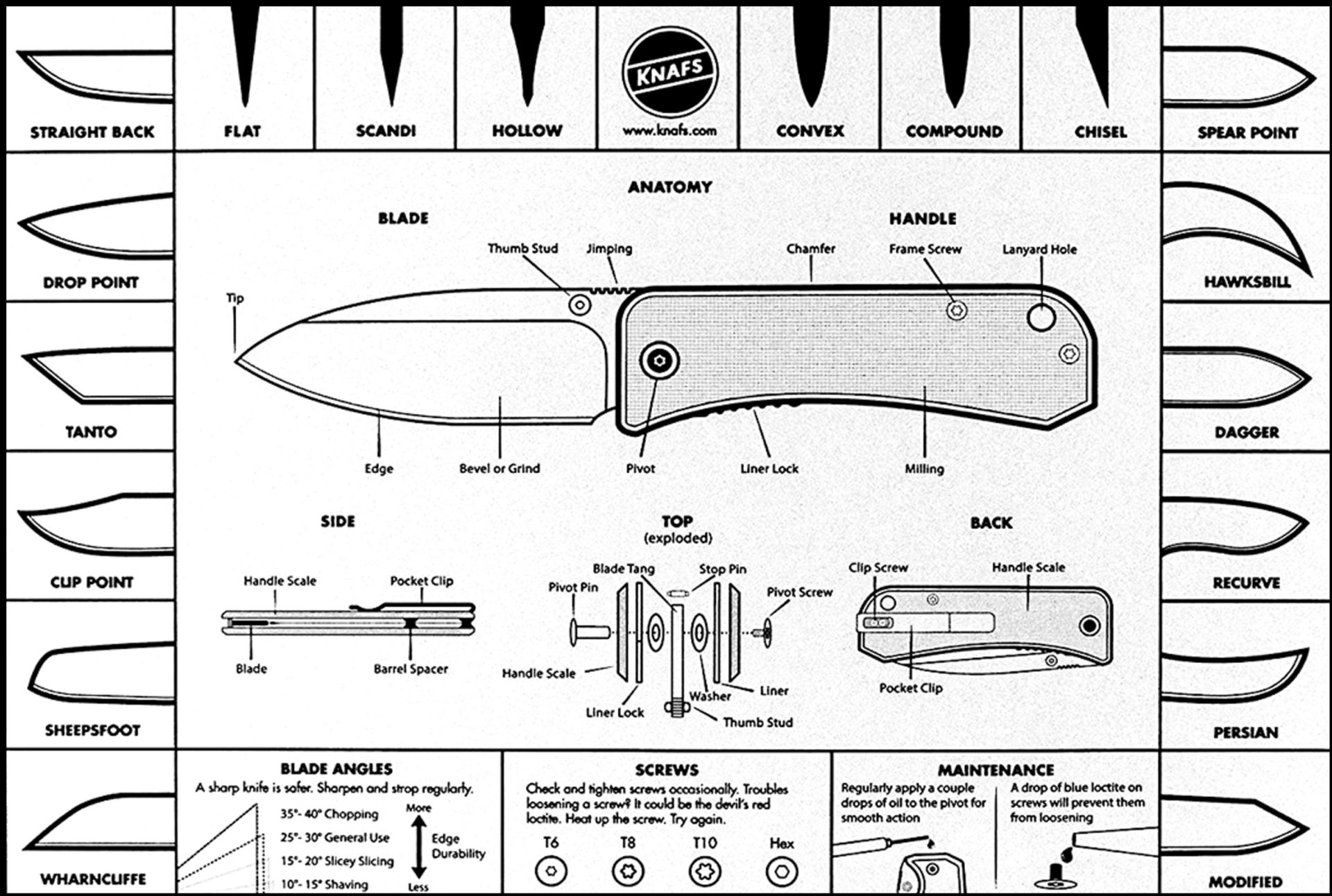



 Learn More
Learn More






 Learn More
Learn More






 Learn More
Learn More




 Shop Now
Shop Now




BLADE FINISHES
BLASTED:
Using abrasive, glass or ceramic beads, the finish is made by blasting the materials at a high pressure against the metal, resulting in an even grey finish. A blasted finish reduces reflection and glare due to its even matte surface. Creating a blasted finish is a base level or user level finish on a knife blade. The blasting creates an increased surface area and micro-abrasions make the steel more prone to rust and corrosion. A blasted blade, even from stainless steel, can rust overnight if left in a very humid environment.
BRUSHED:
A brushed finish using an abrasive wheel that creates a satin-like finish pattern. Overall, it provides an attractive working finish without the cost involved with a hand satin finish. It is possible to have a brushed finished blade grinds and combined with hand satin finish flats.
COATED:
Usually black, flat dark earth or grey, a coated finish reduces the reflection and glare while reducing wear and corrosion. However, ALL coatings can be scratched off after continuous heavy use, and the blade would have to be re-coated. Generally the harder the finish, the more resistant to wear and the more expensive to add to a knife. High-quality finishes are bonded electrically, chemically or thermally to the surface as opposed to simple drying paint-like coatings. High-end coatings like DLC (Diamond-Like Carbon) require that the blade goes to a specialty coating facility for PVD (Physical Vapor Deposition) application in a vacuum environment. Interestingly, before being coated most blades receive a blasted finish to have maximum adhesion surface area. Coatings can prolong the life of a blade (especially with carbon steel) by preventing corrosion or rust. Quality coatings add cost to a knife but provide more corrosion resistance, less reflection and require less maintenance.
POLISHED:
A mirror-polished finish is done by hand, polishing the metal into a highly reflective surface. While it provides a great look and offers better corrosion resistance due to the smoothness of the blade, this finish type involves a lot of polishing to maintain its look and its reflective quality would be telling in tactical fieldwork. The amount of skill used to create this finish often results in an expensive blade. A mirror finish is quickly scratched when used and is largely a presentation finish.
SATIN:
A satin finish involves sanding the blade in one direction with increasing degrees of a fine abrasive. A satin finish shows the bevels of the blade, showcasing the lines of the knife while reducing its reflective glare. Hand satin finish is generally done on upscale, high-end, collector-grade knives. The finer the abrasive and the more even the lines; the cleaner the satin finish blade looks. Satin finishes can also be used on the handle or fittings to enhance the look of the knife. A nice hand satin finish takes time and can increase the cost of the knife.
STONEWASH:
A stonewashed finish refers to tumbling the blade in abrasive materials. This finish easily hides scratches, while also providing a less reflective nature than a brushed or satin finished blade. There is a wide variety of stonewashed finishes based upon the abrasive shape, tumbling motion, and the type of finish the blade has before it enters the tumbler. An “acid stonewashed” or “black stonewash” finish is a blade that has had an acid treatment that darkens the blade before it undergoes stonewashing. The acid oxidation enhances a blade’s rust resistance by placing a stable oxide barrier between the steel and the environment. A very positive benefit of stonewashed blades/handles is that they are low maintenance and preserve their original look over time; the stonewashed finish hides the scratches that can occur with use over time.
BLADE STYLES & GRINDS

